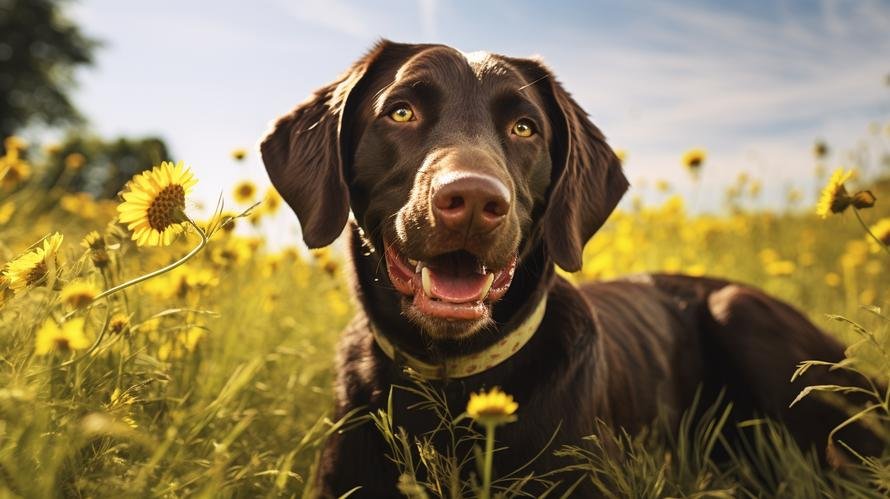Picture a canine athlete with a laser-sharp focus and an enviable work ethic. Now, what if I told you that such a dog exists, and it’s a breed that’s been flying under the radar for the majority of dog enthusiasts? Enter the Plott, a hound with a nose that can track a scent for miles and a determination that athletes aspire to.
Not your typical household name, the Plott hound prances with a history rich in hunting and tracking. Hailing from the mountains of North Carolina, this breed is a master tracker, originally bred to hunt boar. Because of their natural inclacity to pursue and track, training a Plott can be an enticing challenge that yields great satisfaction.
So, let’s dive into the mind of a Plott. Intelligence and eagerness to please are woven into their DNA, which makes them more trainable than you might suspect. They are dogs with a strong desire to work and please their human companions. However, it’s essential to approach training with a strategy as robust and dynamic as the dogs themselves.
Positive reinforcement is the golden ticket to Plott training success. This breed thrives on rewards, whether it’s treats, praise, or an extra play session. Punishments or harsh tones can cause these sensitive souls to shut down, so keep the vibe positive and the treats aplenty.
Socialization is another cornerstone of effectively training your Plott. It is crucial to introduce them to new people, dogs, and environments when they are puppies. A well-socialized Plott is a well-adjusted dog and this makes future training efforts much smoother.
Consistency in training cannot be overstressed. Plotts, like many breeds, benefit from a routine that’s as steady as a ticking clock. It provides a structure in which they can understand and predict what is expected of them. Repeat the same commands and stick to your training rituals, and you’ll find a Plott can pick up new skills like a pro.
Physical activity and intellectual stimulation are as important to a Plott’s training as the commands themselves. Bred to hunt for hours on end, Plotts have energy reserves that would put most other breeds to shame. A bored Plott can become a mischievous one, so channel their energy into productive exercises, whether that’s physically challenging activities or mentally stimulating puzzles. Engage them in regular periods of play and exploration to quell their innate hunting instincts.
It’s also invaluable to understand the Plott’s independent streak. Recognized for their ability to hunt alone, Plotts are wired to make decisions autonomously. In certain situations, this independence can manifest as stubbornness during training. To counteract this, establish yourself as the leader early on and consistently throughout the training process. This doesn’t mean being overbearing; rather, it’s about showing calm, assertive energy that channels their respect and attentiveness.
Like many hounds, Plotts have a distinctive voice that they’re not afraid to use. Training your Plott to “speak” on command and more importantly, to be “quiet” on command, can help manage this potential noise factor. This serves a dual purpose—giving them an outlet for their vocal abilities and preventing random outbursts.
Patience is your greatest ally in training a Plott. There will be times when progress seems to stall or even regress. These are not moments to throw in the towel but rather opportunities to reinforce lessons and deepen the bond between you and your dog.
Given their tracking heritage, Plotts, will benefit immensely from scent work and tracking games. It not only sharpens their natural abilities but also provides intense satisfaction and fulfillment to these scent-oriented athletes.
Don’t forget the importance of health in your Plott’s ability to learn and respond to training. A healthy diet, regular veterinary check-ups, and staying on top of preventative care will all help keep your Plott in prime mental and physical shape for training.
Remember, though, that every Plott is an individual. Like any breed, they come with their own quirks and personalities. What works for one may not work for another. Be prepared to tailor your training approach to suit the specific needs and responses of your dog.
Finally, never underestimate the need for bonding time outside of training. The more your Plott trusts and loves you, the more they’ll want to follow your lead. Spend quality time together that doesn’t involve any commands or expectations. These moments solidify your relationship and create an environment where learning can flourish.
Training a Plott isn’t just about molding them into a well-behaved companion. It’s about unlocking the potential of a remarkable breed, understanding the essence of their spirit, and guiding them with a thoughtful, consistent hand. If you commit to the adventure of training your Plott, you’ll not only gain an obedient friend but an unparalleled ally in life’s many pursuits.
True, they may not be the border collie of obedience championships, and maybe they haven’t reached the superstar status of labradors in mainstream pet culture, but underestimating a Plott hound’s trainability is a mistake. They might not be the easiest dog to train, but with the right owner—one who’s as committed, consistent, and enthusiastic as they are—the Plott proves its worth as a companion capable of learning a vast array of commands and skills.
In the realm of dog breeds, the Plott might just be one of the best-kept secrets, a gem among stones. It is a breed that revels in the joy of work and the satisfaction of a challenge met. In the hands of a patient and loving trainer, a Plott will rise to the occasion, mastering the art of obedience with a wagging tail and a keen eye ever fixed on the next adventure.



